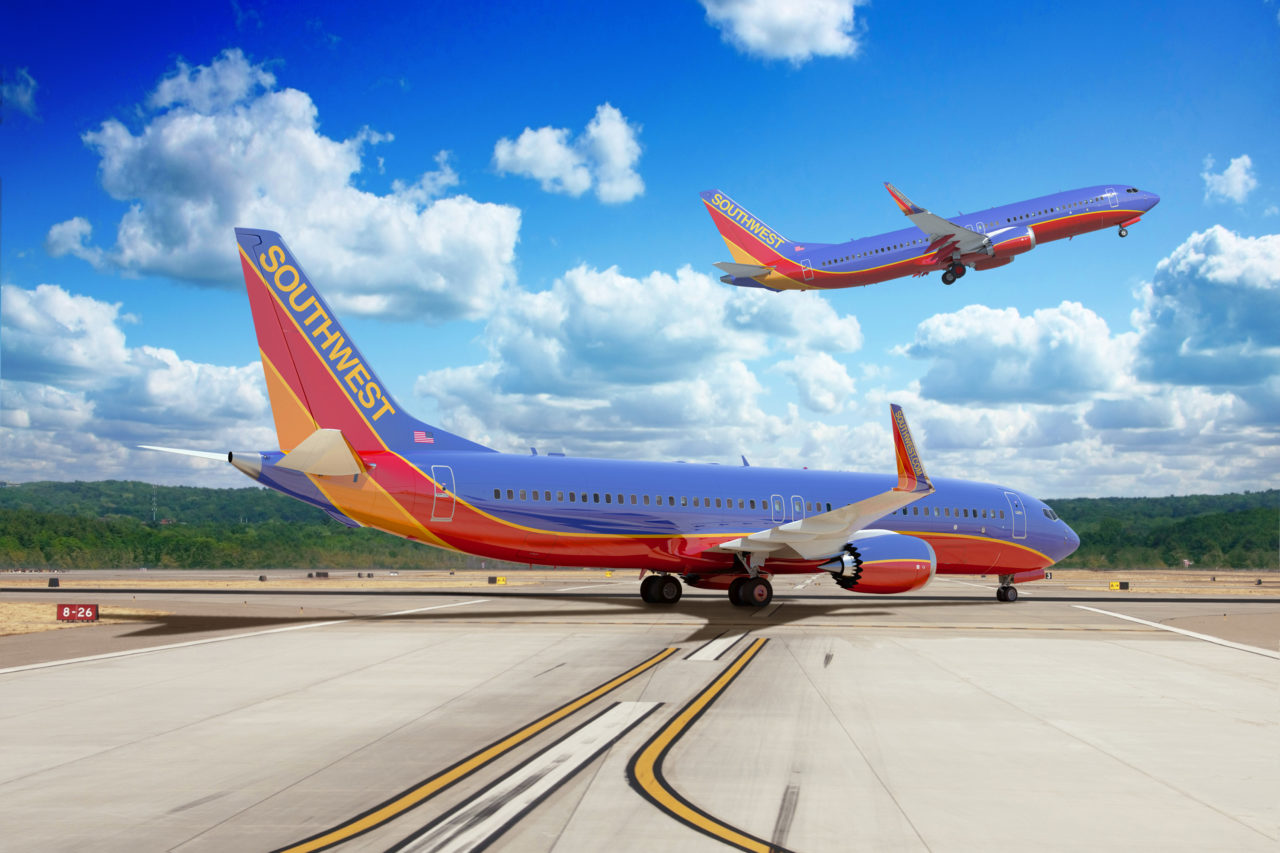
Imagery of 737 MAX aircraft in Southwest Airlines regalia. (SWA)
A 66 percent year-over-year revenue loss in the second quarter saw Boeing’s commercial airplanes segment tumble below defense as the company’s most profitable.
Ongoing trouble with the grounded 737 MAX helped cut $14 billion in revenue during 2018’s second quarter to only $4.7 billion in the same period this year. Boeing’s defense and space business made $6.6 billion in the second quarter of 2019, up 8 percent from last year, while the new global services segment’s $4.5 billion in revenue represents an 11 percent year-over-year growth. In total, the evaporation of Boeing’s largest segment means a 35 percent decrease in quarterly revenue from 2018.
Shrinking airplane deliveries and an additional $1.7 billion spent on the 737 MAX program are the primary culprits in the losses according to Boeing CFO Greg Smith.
Based on Boeing’s latest estimates, the plane could be back in the air as soon as early fourth quarter this year. If there are any more problems, though, Muilenburg saod production could be in trouble.
“If any of the timeline assumptions change significantly from a start of the fourth quarter return-to-service, then we’ll have to evaluate alternatives, and those alternatives could include different production rates, they could include a temporary shutdown of line,” he said.
For now, airlines keep pushing their schedules back. Just a week after pushing its grounding of the 737 MAX into November, Southwest — with 31, the airline has the largest fleet of the aircraft — announced it will keep the MAX on the ground through the busy holiday season into January.
“As we announced last week, we are recognizing impact to our second-quarter results from both the longer-than-expected lower production rate and also estimated potential concessions and other considerations to customers,” Smith said. “I want to personally thank everyone who continues to be our partner in this journey.”
The most recent update on the MAX program was last month, when the FAA flagged a new software issue for Boeing to fix. Boeing CEO Dennis Muilenburg said on a conference call that the company is working with regulators to implement the necessary adjustments, and that it is definitely a software fix that won’t require any changes to hardware. By its updated timeline, barring new issues, Boeing estimates it will be finished with the FAA-mandated updates by September, with a return to service shortly to follow.
Outside of the MAX, Smith said delays with the production of General Electric’s GE9X engine would push the 777X’s first flight from late 2019 into early 2020. The plane is otherwise performing well in preflight testing, he said. The first two are currently in the intermediate gauntlet, but engine bottlenecks will slow things down, Smith said.
Muilenburg also commented on Boeing’s new mid-market airplane, expected to be a midsize widebody jet that beats smaller narrowbodies and existing twin-aisles on efficiency and operating cost.
“Our assessment of the market opportunity hasn’t changed,” he said. “We see a potential market there for 45,000 aircraft and we continue to see significant customer interest in that marketplace.”
Boeing has a dedicated team working on addressing risks and improving development program performance.
However, while Boeing continues to have a team dedicated to the new mid-market aircraft (NMA), its top talent is working on the 737 MAX, and Muilenburg said that Boeing wouldn’t move forward on the NMA until after the 737 MAX issues are wrapped up and the plane is flying again.